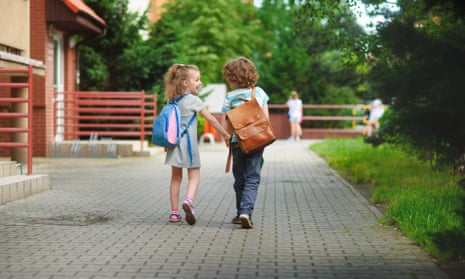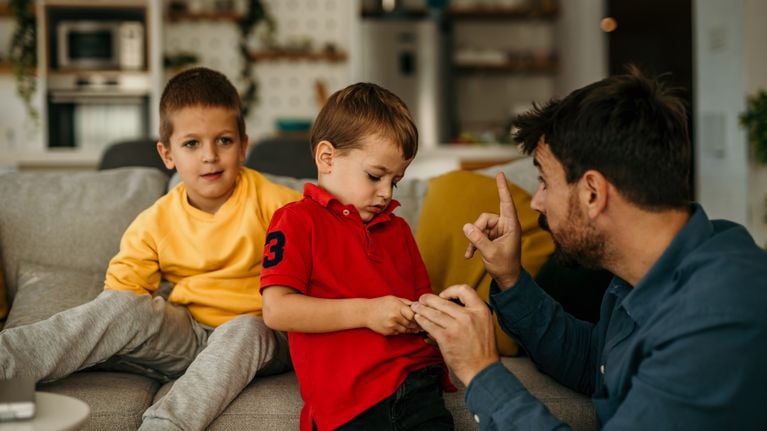What Parents Should Know (and Do) When Students Return to School Following the Pandemic
A sincere and compassionate manual for managing your child's return to school

The thought of children returning to school might now feel like traversing a maze, parts perplexing, part emotional, and part apprehensive for something that was previously so normal. Our definition of normalcy was altered by the global pandemic, and our children's second home was not exempt.
Throughout the crises, some kids have persisted in going to school in person. As part of a digital experiment that few were prepared for, others have learnt from behind screens in kitchen alcoves and bedrooms. Parents everywhere are now asking the same question: Is it safe to bring my child back to school? This is because vaccine access is growing but uncertainty remains. And just as crucial: How can I get them ready for this change?
Let us examine everything carefully, practically, and with the sensitivity that this situation requires.
Why Returning to School Is Important Now More Than Ever
The pandemic is still here, yes. But so is the cost of being alone for a year. Although our children are physically protected thanks to remote learning, many of them are having emotional and social difficulties. Children are suffering from this "new normal" in a number of ways, including increased anxiety and academic regression. Furthermore, an additional semester of waiting could simply widen the divide for families already experiencing financial, emotional, or other crises.
Going back to school could be a significant reset for kids who are not at high risk and reside in areas with comparatively low case counts. Not only for education, but also for fun, camaraderie, organization, and exercise. That brief period of normalcy, even if it is only for a few weeks before summer, can have a profound impact.
What Qualifies as a Sufficiently Safe School Today?

No location is completely risk-free. However, a lot of school districts are putting safety first by making deliberate adjustments. Here are some things parents should check for in their child's school plan:
1. Effective Masking
Proper masking is still a key component of protection, even for teachers who have had vaccinations. Indoors, both employees and children should wear properly fitting masks.
2. Strategic Distancing
In their classrooms, cafeterias, and halls, schools must clearly define social separation. Will your kids be six feet apart when they eat lunch? Will there be a staggered recess?
3. A Clean Hands Culture
Children can form habits that last beyond the pandemic with the support of visible sanitizer and regular handwashing intervals.
4. Transparency and Screening
It should be common practice to do daily health checks at the school door or at home. Clear procedures for contact tracing and quarantine are also essential if a person tests positive.
5. Fresh air and ventilation
Are the windows open? Classes outside? HVAC systems that have been updated?
6. Intelligent Meal Plans
Planning ahead is demonstrated by your school's use of pre-packed lunches, well-spaced seats, and, when feasible, outside dining.
How Parents Can Assist Children Get Back into the School World

After a year (or longer) at home, returning to in-person school involves more than just putting on a backpack. Children require compassion and time to re-adjust.
Here's how to make the transition easier:
Learn the Technique of Wearing Masks
Most children are not used to wearing masks for six hours at a time. To develop tolerance, begin doing short bursts of practice at home.
Bring Back Personal Space
Remembering to maintain a reasonable distance from others can be unfamiliar to children who have spent the most of their time with their close family. Role-playing and gentle reminders can be beneficial.
Engage in Practical Hygiene
Before it becomes a requirement at school, include frequent handwashing into your daily routine at home.
Reset Procedures Slowly
Set a routine for eating breakfast, getting dressed (yes, even if there is nowhere to go), and rising a little earlier each day. Once school starts, this will help calm the morning chaos.
Discuss the Future
Classroom and Zoom school policies are not the same. Remind your youngster that face-to-face instruction involves silent listening, hand raising, and collaborative activity.
Rethink Lunch Together
Lunches at school are now different. Include your child in choosing simple, healthful lunch options that they will eat if they are packing their own. A basic bento box and a water bottle that does not leak can also be helpful.
Anticipate bumps and make room for emotions.

Do not be shocked if your child exhibits strong emotions, even if they are excited to return to school. The re-entry process includes social awkwardness, fatigue, and even hostility.
Set aside time to check in every day. Pose open-ended inquiries, such as "What shocked you today?"
“Was there anything that felt odd or hard?”
"What amused you?"
Conversations during dinner, before bed, or during tech-free afternoon walks can all serve as effective connection-building tools.
In conclusion, each family is unique.
Here, there is no one-size-fits-all answer. For the time being, continued remote learning can be the best option if your child or someone in your home is at severe medical risk. And that is all right. Even though our boats may appear different, all parents are navigating the same storm.
Still not sure? Consult a pediatrician.
What's Your Reaction?




















